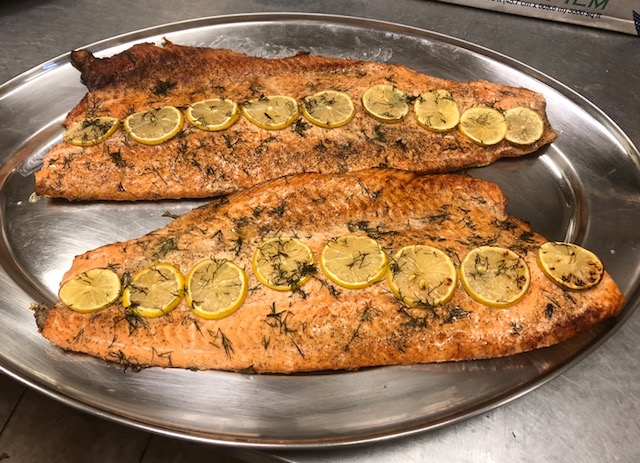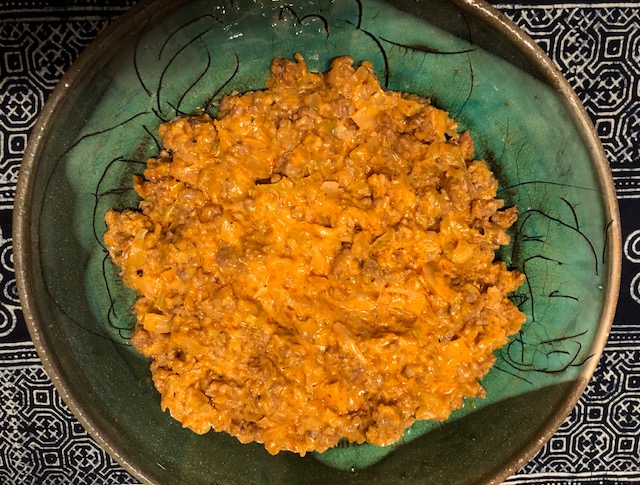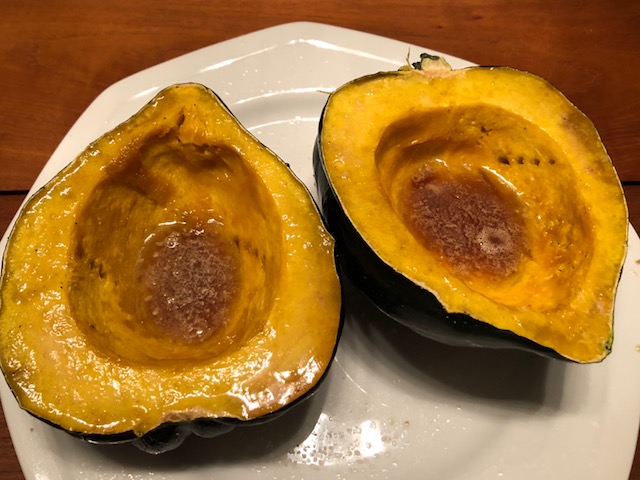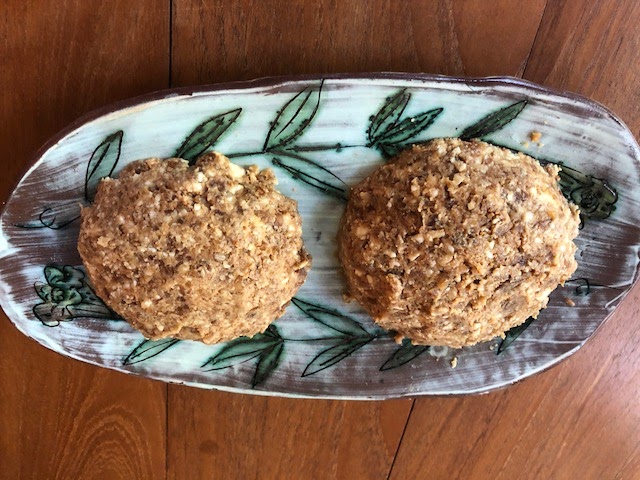,
Chinese Braised Pork
(“Red Cooked”) with Tofu (Chinese from
Southeast Asia)
“Red
Cooking” is an old Chinese braising method for meat and poultry, practiced more
at home than in restaurants. The “red” refers to the soy sauce in the broth
with flavoring vegetables before adding the meat.
This recipe
is based on the original method that I learned for braising chicken in
Malaysia. The recipe serves six to eight, accompanied by white, unsalted rice.
2 1/2
pounds (before trimming) pork shoulder
1 tablespoon
oil
1 large clove garlic or 2 medium cloves
3 medium
shallots or 3 green onions
4 slices
(1/8-inch) ginger, unpeeled
2
segments star anise
2-1/2
cups water
1 teaspoon
black soy sauce
2 teaspoons
oyster sauce
2 teaspoons
rice wine or sherry
2 tablespoons
regular soy sauce
1 teaspoon sugar
1 teaspoon salt
1
(1-pound) block firm-style tofu
Several sprigs of cilantro or thinly sliced green onion for garnish
Trim off
excess fat from pork. Remove, but save, any bone, and cut meat into 1-inch
pieces. Bruise garlic and shallots or green onions. Slice ginger.
 |
| Red cooked pork and tofu served in antique Chinese bowl |
Heat oil
in heavy pot. Briefly fry (15 seconds) bone, garlic, shallots or green onions,
ginger and star anise. As soon as fragrant, add water and soy sauces, wine and
oyster sauce. Bring back to boil.
Add pork
pieces a few at a time, the tougher parts first, so as to keep the mixture
boiling. Stir, cover and reduce heat. Stew until pork is tender, 40-50 minutes,
stirring occasionally. Add sugar and salt toward the end of cooking. Liquid should be reduced somewhat but not thick. Add a little water if necessary. When
meat is cooked, remove ginger, bone, and star anise pieces.
Cut
drained tofu into 1/2-inch chunks. Drop these, part at a time into the
simmering liquid. Gently shake and swirl pot to mix. After a minute or two, stir
very carefully so as not to break tofu pieces. Simmer a total of about 4
minutes. Taste and add salt if necessary.
Serve
with rice. Accompany with a simple stir-fried green vegetable.









































